15 Historic American Towns That Changed the Country’s Story
From the birth of the nation to the industrial age, historic towns in America have been at the center of it all. These towns witnessed pivotal events that would go on to change the country’s direction. They are home to the people and moments that have influenced America’s legacy. Whether through innovation, revolution, or culture, their role is undeniable.
This post may contain affiliate links, which helps keep this content free. Please read our disclosure for more info.
Lexington, Massachusetts

Lexington is known as the site of the first battle of the American Revolution, making it a town that marked the beginning of the United States’ struggle for independence. In 1775, the shot heard round the world was fired here, signaling the start of the Revolutionary War. The town’s significance is commemorated at the Lexington Battle Green, where visitors can learn about the nation’s first military engagement. Another must-see spot is the Hancock-Clarke House, where John Hancock and Samuel Adams were staying when the British arrived. Today, Lexington stands as a symbol of American resilience and independence.
For visitors, Lexington offers a rich historical experience with its preserved landmarks and reenactments of historical events. The town’s commitment to preserving its heritage has made it a popular destination for history enthusiasts. Its location near Boston allows for easy access to other historical sites like Concord and the Massachusetts Bay Colony. The picturesque town center is filled with charming shops and restaurants that reflect its colonial past. Lexington is truly a place where the story of the American Revolution comes to life.
Philadelphia, Pennsylvania
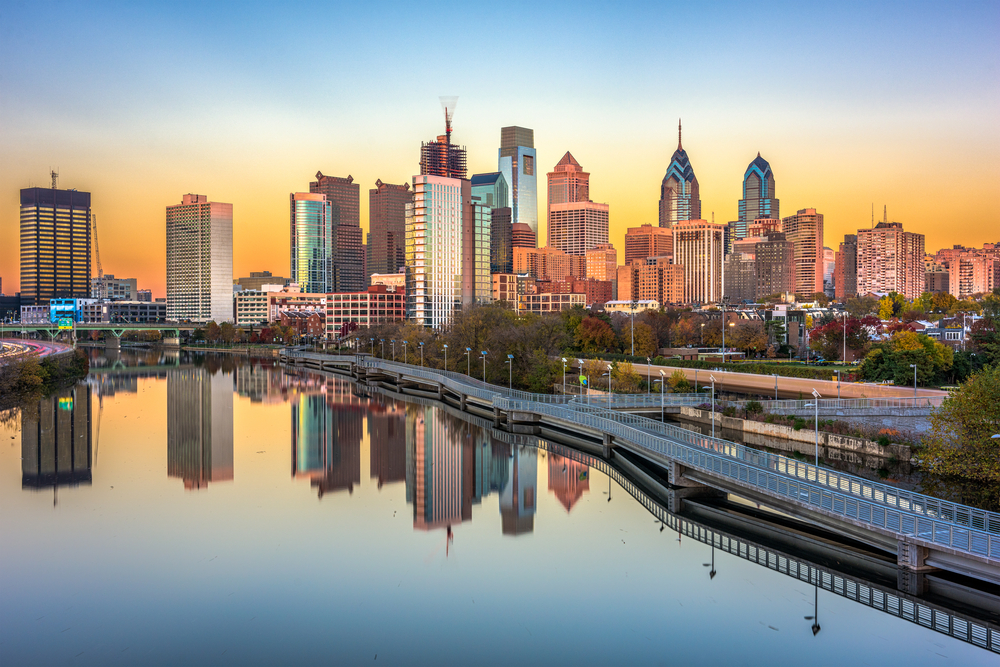
Philadelphia is widely regarded as the birthplace of American democracy. In 1776, the Declaration of Independence was signed in the Pennsylvania State House, now known as Independence Hall. This historic event forever changed the course of history, marking the birth of a new nation. Philadelphia was also the temporary capital of the United States after the Revolution, where the U.S. Constitution was drafted in 1787. Today, Independence National Historical Park is home to iconic landmarks like the Liberty Bell and Independence Hall.
Beyond its historical significance, Philadelphia boasts many cultural and artistic attractions, including the Philadelphia Museum of Art and the Barnes Foundation. Visitors can walk through the cobbled streets of Old City, where much of early American history unfolded. The city’s thriving food scene, especially its famous cheesesteaks, adds to its charm. Philly’s rich history, combined with its modern-day vibrancy, makes it a must-visit destination for anyone interested in America’s past. It remains one of the country’s most influential cities.
Jamestown, Virginia

Jamestown holds a pivotal place in American history as the site of the first permanent English settlement in North America, established in 1607. This early colony faced numerous hardships, from disease to conflicts with Native Americans, yet it survived and laid the groundwork for the future of America. Historic Jamestowne, part of the Colonial National Historical Park, offers visitors a chance to explore the remains of the original settlement and learn about the lives of the early colonists. The Jamestown Settlement museum provides additional insights into the founding of the colony and its global significance.
Today, visitors can experience living history at the Jamestown Rediscovery archaeological site, where excavations continue to unearth artifacts from the 17th century. The area is also home to the Yorktown Victory Center and the Colonial Parkway, which connects other historic sites in the region. Jamestown’s place as the birthplace of American civilization makes it a top destination for history buffs. The nearby scenic views of the James River add to its allure. Jamestown remains a key landmark in understanding America’s colonial history.
Gettysburg, Pennsylvania

Gettysburg is synonymous with one of the most pivotal battles of the American Civil War, fought in 1863. The Battle of Gettysburg was a turning point in the war, marking the first major defeat for the Confederacy and a crucial moment in the Union’s fight for survival. Today, the Gettysburg National Military Park preserves the battleground and offers visitors a chance to walk through the fields where this historic clash took place. The Gettysburg Address, delivered by President Abraham Lincoln, is another defining moment tied to this town, reminding us of the war’s deeper moral significance.
The town of Gettysburg also boasts several museums and monuments dedicated to the soldiers who fought in the war. The Gettysburg Museum of History is a great spot for those interested in Civil War artifacts, while the Soldiers’ National Cemetery is a solemn tribute to the fallen. The town itself is steeped in history, with preserved homes and buildings dating back to the 19th century. Gettysburg continues to attract visitors who seek to understand the war’s lasting impact on the United States. The peaceful, rolling hills of the area provide a poignant backdrop for this historically rich destination.
New Orleans, Louisiana
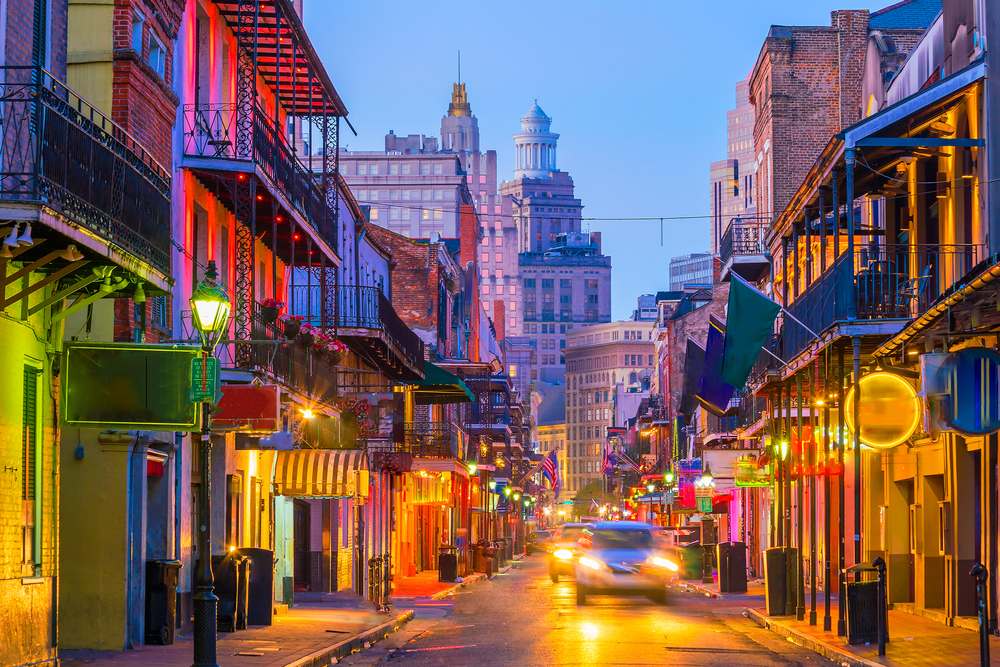
New Orleans is a city that blends French, Spanish, and African influences, making it a key cultural hub in American history. Founded in 1718, it became a vital port in the American South and played a central role in the trade and economic expansion of the United States. The Battle of New Orleans, fought in 1815, is one of the most significant military victories in American history, solidifying the nation’s sovereignty. Today, the French Quarter remains a vibrant district filled with colonial architecture and bustling markets, where visitors can soak in the city’s rich cultural heritage.
Beyond its historical role, New Orleans is known for its music, especially jazz, which was born in the city’s lively neighborhoods. The city is famous for its annual Mardi Gras celebrations, which showcase its French and Creole roots. The historic St. Louis Cathedral and the National WWII Museum are just a few of the many attractions visitors can explore. New Orleans is a city that blends history, culture, and celebration in a way few others can match. For travelers seeking a mix of historical exploration and modern-day excitement, New Orleans is a must-see.
Salem, Massachusetts

Salem is most famous for the infamous Salem Witch Trials of 1692, an event that forever changed the way Americans view justice and mob mentality. The trials, fueled by superstition and fear, led to the execution of 20 people, and today, the Salem Witch Museum provides a powerful look at this dark chapter in American history. The town has since transformed into a cultural center, with historic homes and landmarks that preserve its 17th-century charm. The Salem Maritime National Historic Site also highlights the city’s importance as a major port during the Colonial era.
For visitors, Salem offers a range of attractions related to its witch trial history, including the Witch House, the only building still standing with direct ties to the trials. The town’s vibrant arts scene is reflected in its many galleries and cultural festivals. The Witch Trials Memorial is a somber but important part of Salem’s landscape, allowing reflection on the consequences of fear-driven justice. Despite its tumultuous past, Salem has become a place where history and culture intersect. It serves as both a reminder of the dangers of intolerance and a testament to the resilience of the American spirit.
Charleston, South Carolina
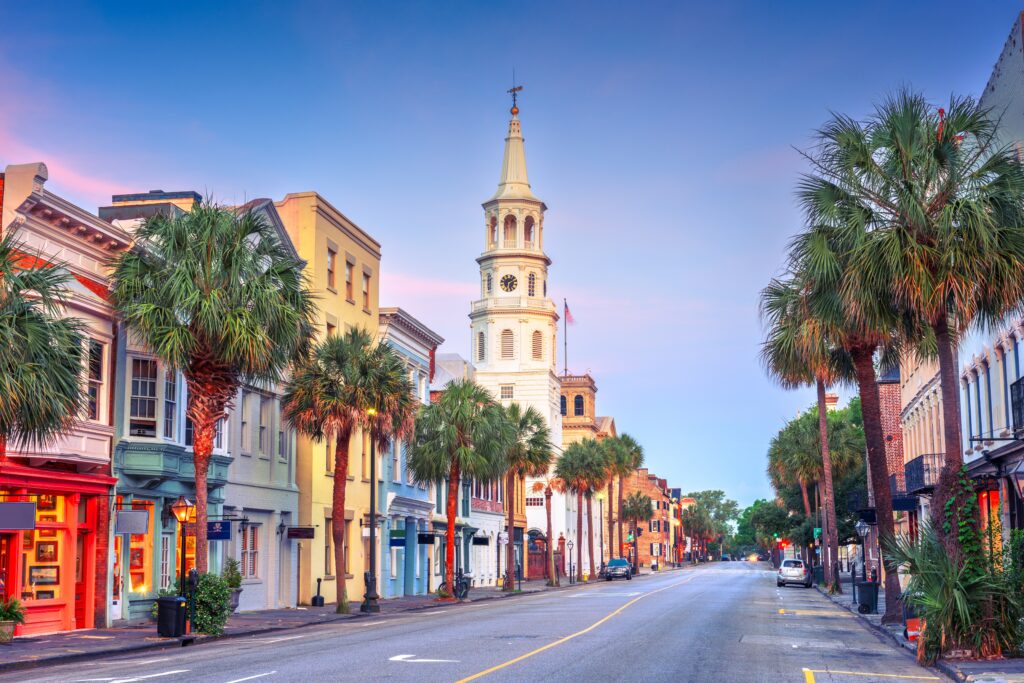
Charleston played a central role in both the American Revolution and the Civil War, making it one of the most historically significant cities in the United States. In the 1700s, Charleston was a bustling port city, and it became the site of the first shots fired in the Civil War at Fort Sumter in 1861. The city’s well-preserved architecture and historic homes, such as those on Rainbow Row, offer visitors a glimpse into the past. The Charleston City Market, a vibrant market for over 200 years, provides a unique blend of history and commerce.
Today, Charleston is known for its cobblestone streets, waterfront views, and centuries-old buildings, all of which attract history lovers and tourists alike. The city’s role in both the American Revolution and the Civil War makes it a must-visit for anyone interested in the nation’s early conflicts. The Battery promenade offers spectacular views of the harbor and historic homes. Charleston’s preservation of its architectural and cultural history sets it apart as one of the nation’s most charming and historically rich cities. Visitors can truly feel the pulse of American history in its beautifully preserved districts.
St. Augustine, Florida

St. Augustine, established in 1565, holds the title of the oldest continuously inhabited European-established settlement in the United States. This Spanish-founded city played a key role in shaping early American history through its strategic location and its role in the Spanish colonial system. The Castillo de San Marcos, a well-preserved fort built in the late 1600s, remains a symbol of St. Augustine’s military importance. As the oldest city in the U.S., St. Augustine also features numerous historic homes and museums, providing an insightful look into early American colonial life.
Visitors can stroll through St. Augustine’s charming historic district, where cobblestone streets and colonial-style buildings create a picturesque setting. The city is also home to the Fountain of Youth Archaeological Park, where the search for eternal youth is part of the city’s lore. St. Augustine’s blend of history, culture, and scenic beauty makes it a unique destination for those wanting to experience early American life. Its blend of Spanish, British, and American influences continues to shape its character today. St. Augustine remains one of the most historic and picturesque cities in America.
San Antonio, Texas

San Antonio is a city rich in history, with its most famous landmark, the Alamo, being central to the Texas Revolution in 1836. This pivotal battle, in which a small group of Texans made a heroic stand against Mexican forces, became a symbol of resistance and sacrifice. Today, the Alamo is a major tourist destination, drawing visitors from around the world. The San Antonio Missions National Historical Park also offers a glimpse into the city’s role in Spanish colonization.
Beyond its military history, San Antonio is also known for its vibrant cultural scene, including the famous River Walk, where visitors can enjoy dining and shopping along a scenic canal. The city’s mix of Mexican, Native American, and European influences is reflected in its architecture and cultural festivals. The annual Fiesta San Antonio, celebrating the city’s heritage, attracts thousands of visitors each year. San Antonio is a perfect blend of historical importance and modern-day charm. It is a city where the past is always present, adding to its appeal.
Boston, Massachusetts
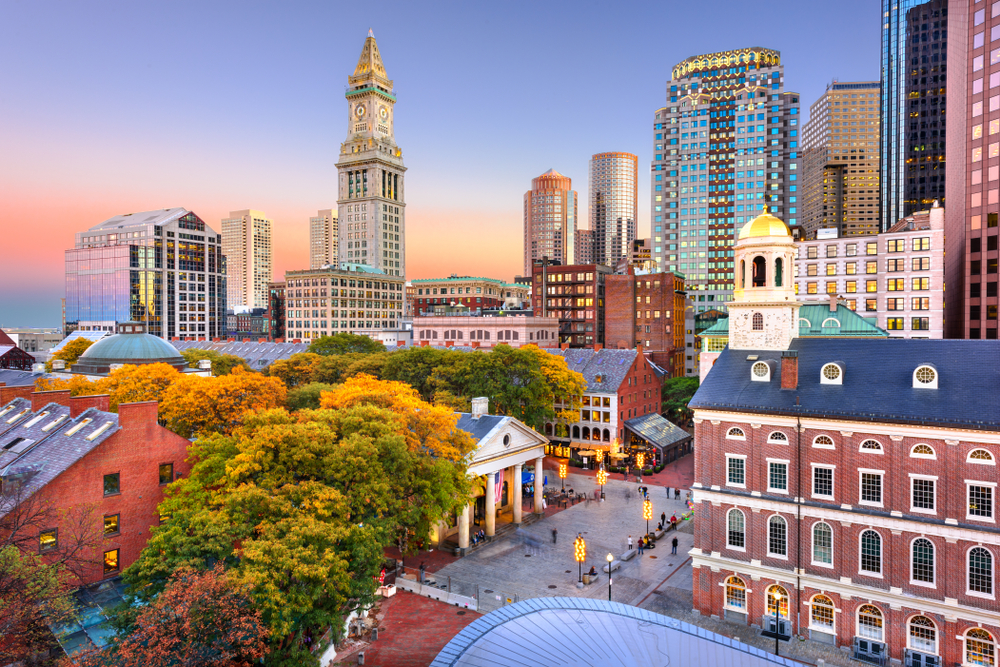
Boston, one of America’s oldest cities, played a key role in the American Revolution and is known for being the site of several major events that shaped the nation’s history. The Boston Tea Party of 1773, in which colonists protested British taxation by dumping tea into Boston Harbor, is one of the most famous acts of defiance in American history. The city is also home to the Freedom Trail, a 2.5-mile route that leads visitors through 16 historical sites, including the Massachusetts State House and Paul Revere’s House.
Boston is a city that combines rich history with modern culture, offering a wide range of museums, parks, and historic landmarks. The city’s vibrant neighborhoods, such as the North End and Back Bay, are filled with historic buildings and diverse dining options. Visitors can explore the Boston Common, the oldest public park in the United States, or take a cruise along the harbor. Boston’s historical importance is still evident today, with its universities, medical institutions, and political significance continuing to shape the nation. It is a city where the past meets the present in a remarkable way.
Charleston, West Virginia
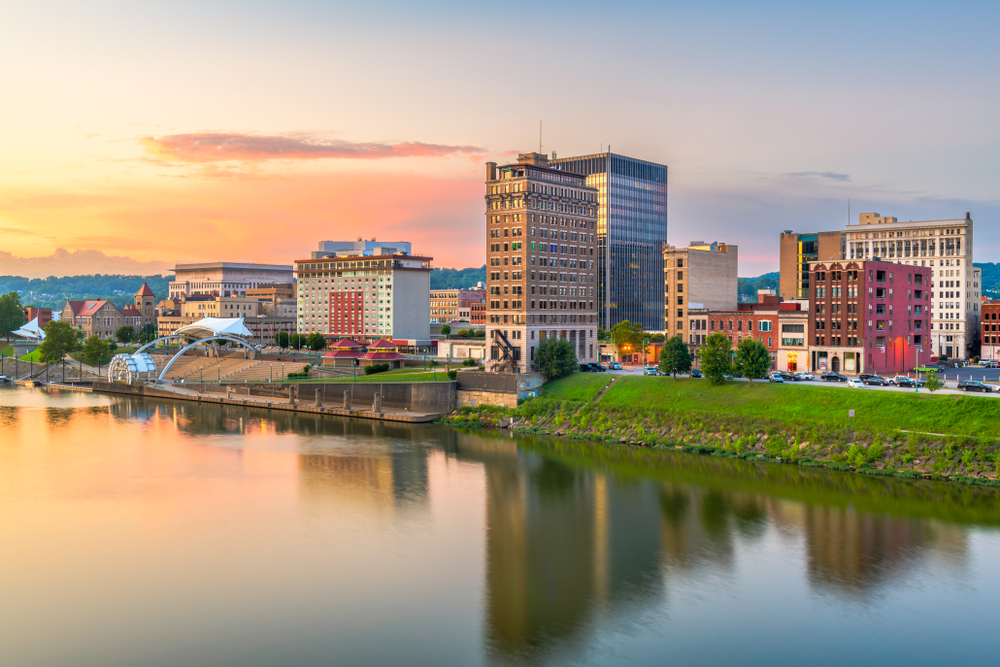
Charleston, West Virginia, is historically significant as the site of pivotal moments during the Civil War, with the city changing hands between Union and Confederate forces. The Battle of Charleston was a critical moment in the region’s history, and many sites related to the Civil War can still be visited today, including the West Virginia State Capitol and Kanawha Valley. Charleston’s role as the capital of the state during the war added to its strategic importance. The city also played a role in the rise of the coal industry, which was vital to West Virginia’s economy for much of the 20th century.
Today, Charleston offers a blend of history and modern culture, with a thriving arts scene, museums, and annual events. Visitors can explore the city’s historic architecture, including the 1920s-era State Capitol, one of the most architecturally stunning buildings in the state. Charleston is also known for its outdoor recreation, including hiking and fishing along the Kanawha River. The city’s resilience through historical challenges continues to shape its identity today, making it a fascinating place for history lovers. It serves as a reminder of the important role small towns can play in the larger story of the United States.
Savannah, Georgia

Savannah, Georgia, is one of the oldest cities in the United States, founded in 1733. The city played an important role during the American Revolution, as it was a key location in the Southern colonies. The city’s design, with its lush public squares and historic homes, has remained largely unchanged, making it a popular destination for visitors looking to experience the past. The National Historic Landmark District showcases many well-preserved buildings, offering a glimpse into the city’s colonial and Civil War history.
Savannah is known for its Southern hospitality, which visitors experience through its charming streets, local shops, and delicious cuisine. The city’s squares and parks are ideal spots for walking tours, where history and nature come together. Savannah was also a key point in the Civil Rights Movement, where historic landmarks tell the story of its role in shaping modern America. Today, Savannah remains a blend of history, culture, and hospitality, drawing millions of visitors each year. It’s a place where every street tells a story, making it a must-see for anyone interested in American history.
Santa Fe, New Mexico
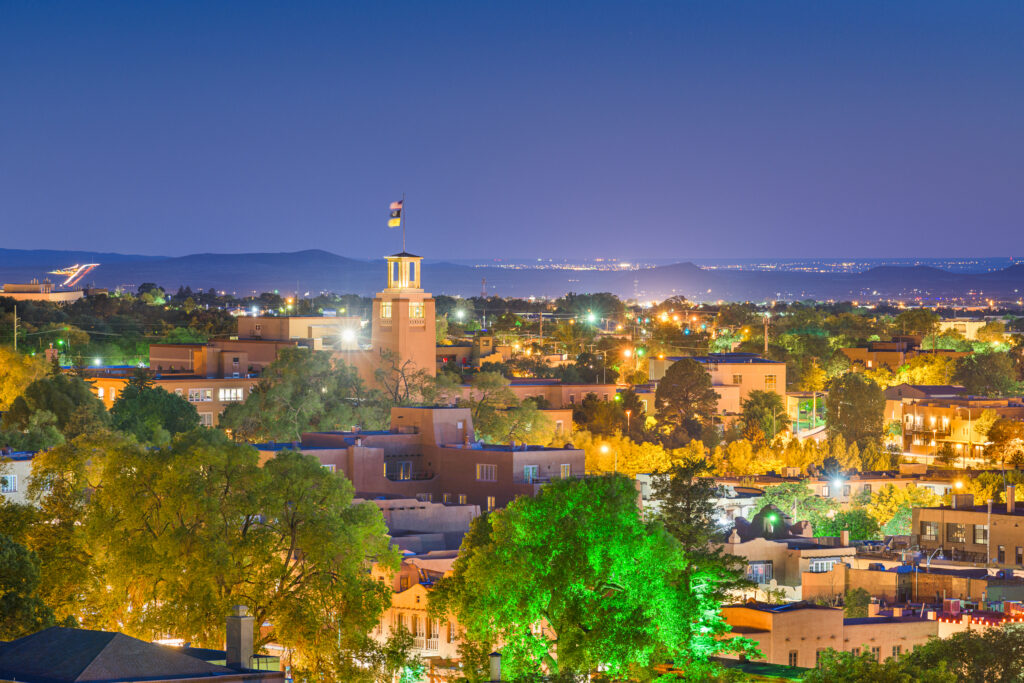
Santa Fe, New Mexico, is one of the oldest cities in the United States, founded in 1610. The city is famous for its blend of Native American, Spanish, and Anglo cultures, making it a unique and important place in American history. As the capital of New Mexico, Santa Fe played a significant role in the development of the American Southwest, especially during the 19th century when it became a hub for trade and commerce. Today, visitors can explore its centuries-old adobe buildings and vibrant art scene, which reflect the city’s rich cultural heritage.
Santa Fe is home to many cultural attractions, such as the Georgia O’Keeffe Museum, which celebrates the famous artist who found inspiration in the desert landscapes. The Santa Fe Plaza is the heart of the city, offering access to historic landmarks, local artisan shops, and excellent dining options. The city’s history, particularly its role in the Spanish colonial era and its relationship with Native American tribes, is reflected in its architecture and traditions. Santa Fe’s warm and welcoming atmosphere, combined with its artistic spirit, makes it a must-visit destination for anyone interested in the history of the American Southwest. It continues to be a place where history and culture intersect in fascinating ways.
Salt Lake City, Utah

Salt Lake City, Utah, is not only the state capital but also a pivotal location in the story of westward expansion. Founded in 1847 by Mormon settlers, it became the center of the Mormon community in the United States. The city played a critical role in the settlement of the American West, especially with the completion of the First Transcontinental Railroad in 1869, which linked the East Coast to the West. Today, the Salt Lake City’s Mormon Temple and the Utah State Capitol are among the city’s key landmarks.
Salt Lake City is known for its stunning natural surroundings, including the Great Salt Lake and the Wasatch Mountains, which provide ample opportunities for outdoor recreation. The city is also a cultural hub, home to the Utah Museum of Fine Arts, the Natural History Museum of Utah, and a thriving music and theater scene. Salt Lake City’s growth was fueled by both religious and economic factors, which shaped its role in American history. Today, it remains a diverse and vibrant city, drawing visitors with its combination of natural beauty, history, and modern attractions. It is a place where the past and present meet in meaningful ways.
Denver, Colorado
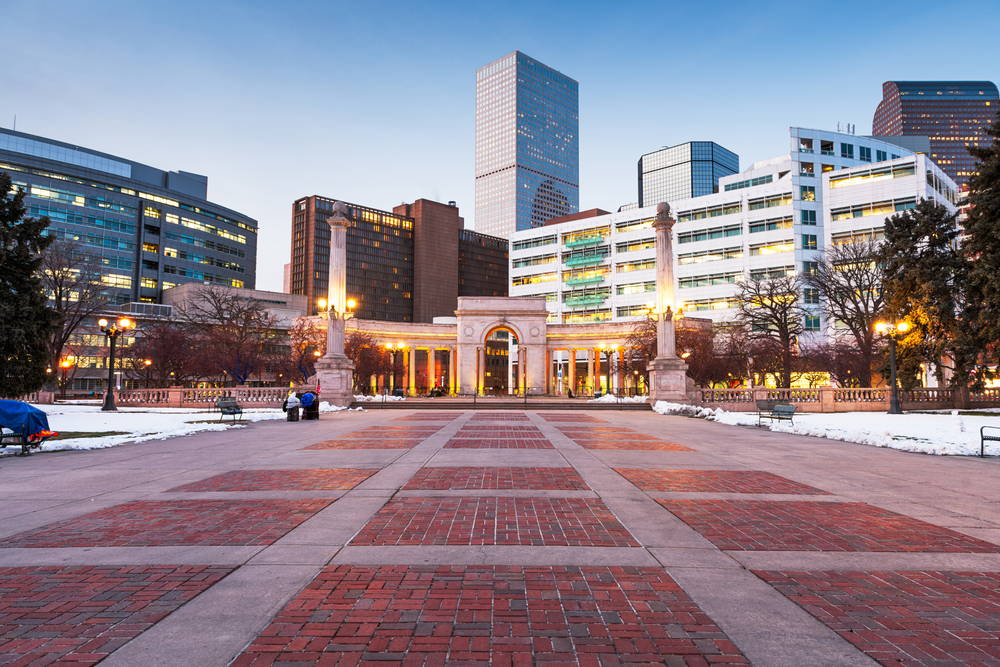
Denver, Colorado, has played a significant role in shaping the American West, from its founding in 1858 as a mining town during the Pikes Peak Gold Rush to its rise as a transportation and trade hub. The city’s location along the Front Range of the Rocky Mountains made it a crucial point for the development of the western United States. Today, Denver is known for its blend of outdoor activities, including hiking and skiing, and its thriving arts and culture scene. The city’s historical significance is reflected in landmarks such as the Molly Brown House Museum, which tells the story of the famous Titanic survivor.
Denver is also home to the Denver Union Station, which played a crucial role in connecting the East and West during the late 19th and early 20th centuries. The city’s diverse culture and history are showcased in the many museums, including the Denver Art Museum and the History Colorado Center. The city’s role in the development of the American West is celebrated in its many historical sites and its position as a gateway to the Rockies. Denver remains a vibrant city where history, culture, and outdoor adventure come together. Its historical roots continue to influence its modern-day character.
Each town carries with it a unique legacy, from early struggles to pivotal turning points. Whether through architecture, landmarks, or local tales, these places provide rich lessons in American history. Visiting them offers a chance to connect with the past and understand how it continues to influence the present.
This article originally appeared on Avocadu.
